Mr. Genès David is the founder of the eponymous company in 1922 in Granetias, on the heights of Thiers.
In the process, he took up the torch of the Arbalète brand and joined the 2 names together: ARBALETE G. DAVID.
The Arbalète brand was then one of the oldest cutlery manufacturers in Thiers.
From 1930, Mr. Genès David began to develop a relationship with the Laguiole knife by manufacturing the Aveyron model (laguiole without bee).
Then from 1950, G. David played an essential role in the rise of the Laguiole knife by forging close ties with the descendants of one of the creators of the Laguiole knife.
In the 1960s, his two sons joined him. Jean-Louis relaunched the subcontracting of the manufacture of the Laguiole model, which then represented more than 50% of the turnover.
The manufacturing is then entirely made on site, from the cutting of raw materials to packaging.
The traditional Laguiole knife made by Arbalète G. David is now a reference.
Manufacturing all of its production in France, while controlling its costs and without denying its vocation for excellence, such is the challenge taken up by Arbalète G. David.
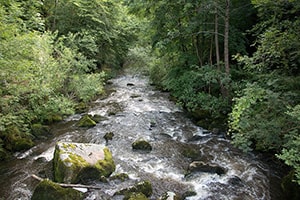
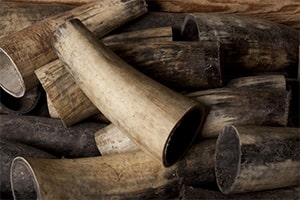
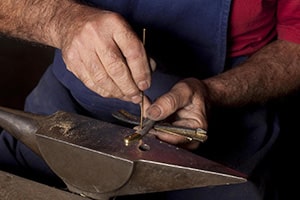

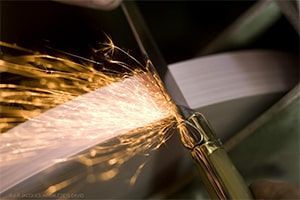
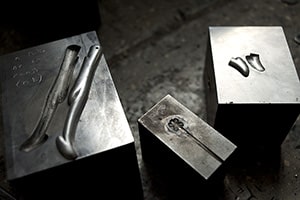
Arbalète G. David, a high-end manufacturing process that respects tradition.
If the tools have evolved over the centuries, it is the same gestures that are reproduced by those who continue to manufacture the products signed Arbalète G. David.
In our workshops in Thiers, everyone strives to live up to the reputation of excellence of a master cutler, creator and manufacturer.
All stages of manufacturing are respected in order to produce, from the cutting of carefully selected raw materials to its packaging, the knife made with the purest respect for the traditional gesture.
From cutting the blade, through its tempering and polishing, to its assembly, it takes more than 200 steps to make a three-piece knife (blade/corkscrew/punch).
Carried out by the master hider, the pressing and cutting of the zebu horn allows to obtain perfect handles, from a living material worked manually.
Arbalète G. David a traditional and innovative brand.
In keeping with a tradition of excellence, new generations continue the legend. With its centuries-old know-how, the artisanal manufacturer Arbalète G. David has acquired its letters of nobility in the world of cutlery.
We invite you to discover our world of authentic pleasure.
The knife is one of the first tools that was made by man to accompany him in his daily life as a weapon or for cutting. It has continued to evolve according to the uses that are made of it and its users: peasant knife, princes' knife, unique art object or kitchen utensil for the housewife, professional instrument etc.
Built on the slopes of the ravine where the Durolle flows, between the plains of the Limage and the Dôme mountains, Thiers has established itself over the centuries as the capital of French cutlery. In addition to the Le Thiers model, many traditional regional knives are made there, including the famous Laguiole knife (since the 19th century).
The Arbalète G. David manufacturing is artisanal. Each piece is unique, shaped by the hand of the craftsman.
The Arbalète G. David brand has a wide range of products: Laguiole folding knives, tableware, hunting knives, regional knives, accessories, etc.
The Laguiole knife was created around 1829. It was inspired by two models: the Capuchadou (a fixed blade knife from the Aubrac farmers) and the Spanish Navaja (a pocket knife from Catalonia). During the harsh winters, the Aubrac farmers went to work in Catalonia. Back home, these seasonal workers brought back the famous Navaja with them. In 1840, the punch was added. This was regularly used by shepherds to pierce the bellies of cattle. In 1880, the corkscrew was added. It was very useful for the Aveyronnais who were waiters in Paris. Thiers being the French capital of cutlery, at the beginning of the 20th century, the craftsmen of Thiers and Laguiole worked together to develop the Laguiole knife. At the beginning of the 1950s, the Laguiole was mainly manufactured in the Thiernois basin. The Laguiole knife would only be produced in limited quantities in Laguiole until the end of the 20th century.
Cutlery was able to develop in Thiers thanks to the driving force of the Durolle about 8 centuries ago. As early as 1240, there were about forty cutlers, then at the end of the 15th century they represented a quarter of the population and in the middle of the 16th century, 170 cutlers. Finally in 1615, there were 416 master cutlers and 1293 workers.
Where did this activity start? Various possibilities exist: from the return of Auvergne Crusaders to the displacement of the population of cutlers from Chateldon driven out by the plague (20 'north of Thiers), to the poor land...
Along the Durolle, paper mills, mills, tanneries, and grinding wheels were set up.
Around 1580, the corporation was organized into Jurande, rules that organized the profession. At the same time, a table of marks was created. This table was made of lead. All the cutlers' marks were struck on it for more than 130 years (from 1596 to 1808).
During this period,
-the establishment of wholesale businesses favored the development of the activity: distribution was national but also in border countries.
-the division of labor was established in manufacturing and distribution.
During the 19th century, industrialization took place. With the disappearance of paper mills and tanneries, cutlery factories invested even more in the Durolle gorges.
-hydraulic energy improved engines
-the advent of stamping in 1888 by Mr Mr Delaire which allowed a more standardized and rapid manufacturing than the traditional hammer for stretching
-a second brand table was created and operated from 1812 to 1857. This time it was made of silver. It was supplemented by a pewter one (visible at the commercial court) and even a paper register used until 1902 (replaced by the National Office of Industrial Property which would become the INPI).
- the democratization of tableware influences this development
- in 1825, the workforce is 5,000 workers and during the Universal Exhibition of 1880, the workforce is 12,000 workers
- installation of suppliers on Thiers: for steel, manufacturers of packaging, crates, transport companies, ...
Anecdote of the yellow bellies: these are the grinders lying on their grindstones a dog lying on their legs to keep them warm.
At the beginning of the 20th century, a new development with the arrival of electricity (Sauviat power station near Courpière).
- the factories of the Durolle gorges (or Rouets valley) move to accessible places.
-the arrival of stainless steel and the first plastics -subcontracting and mechanization are pushed
-companies move into other markets: automotive, armaments, pleasure boating, etc.
After the 2nd World War, production increased until the 70s, then decreased until the 2010s, particularly with competition from Asia.
-creation of the Coutellia show in 1991
-creation of the Thiers Knife Brotherhood in 1993
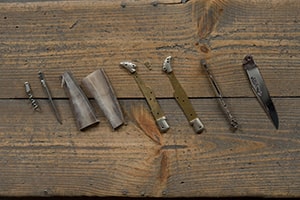
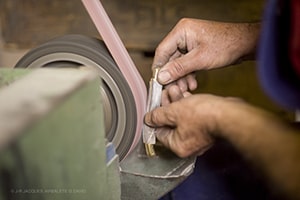

Save products on your wishlist to buy them later or share with your friends.
